This page may contain affiliate links. Please read my disclosure for more information.
What is an e-commerce business?

Just like starting any business, learning how to start an e-commerce store can be challenging. However, setting up, launching, and maintaining a site where entrepreneurs, designers, and creators of all sorts can sell their products is more achievable now than ever before.
E-commerce businesses – which are businesses where the buyer places an order over the Internet have redefined how we shop today. In 2022, e-commerce will make up 14.5% of US retail sales. They range in size from small niche websites to retail giants like Amazon.
There are many reasons why you should start an online business. With an e-commerce business, it’s less expensive to start up, and you have more potential for growth.
You’re not limited by a brick-and-mortar location and can sell to customers all over the world at any time of the day. Working around your family’s schedule and out of your home gives new business owners much more freedom and flexibility.
An e-commerce business is an excellent way to earn extra money and achieve financial independence.
How to start an e-commerce business

The following 13 steps can help you start an online store to sell products or services online.
Step 1. Do your research
Step 2. Find your niche
Step 3. Decide on a business name
Step 4. Create a business plan
Step 5. Choose a business structure
Step 6. Apply for an EIN
Step 7. Apply for licenses and permits
Step 8. Branding strategy
Step 9. Choose an e-commerce platform and build your website
Step 10. Source products
Step 11. Marketing
Step 12. How much does it cost to start an online store
Step 13. Grow and scale
Step 1. Do your research
The first step to starting an e-commerce business is to do your research. Understanding the customer, current trends, and the competition is important. What type of demand is there for the product you’d like to sell, and how could you differentiate yourself from the competition?
Once you’ve found a few potential e-commerce businesses you’re interested in, take the time to learn as much as you can about each one.
Start by looking at what your e-commerce business will offer. Will you focus on physical products, digital products, or services? How will you source your products? Are you selling handmade items? Will you manufacture your own products?
Or does it make more sense to source them from a local wholesaler or a global supplier like Alibaba? If you’re selling physical products, will you ship them yourself or hire a fulfillment service? Will you sell a single product, bundle products, or offer a monthly subscription?
What are the startup costs? Which sort of e-commerce and business regulations apply? What type of entity will you form? Do you need to trademark, patent, or copyright your products? Do you need business insurance, a license, or a permit?
Asking and answering these questions ahead of time will help you write your business plan for your e-commerce business.
Think about the business model you’d like to offer. The most common types of e-commerce business models are business-to-consumer (B2C), business-to-business (B2B), business-to-consumer (B2C), and business-to-government (B2G).
Step 2. Find your niche

Once you’ve done your research, it’s time to choose a niche for your e-commerce business. A niche is an area of expertise that you’ll specialize in. It’s a segment of a larger market that you’ll serve to differentiate yourself from your competitors.
Some examples of niches include Home and Garden – Health and fitness – Fashion and beauty – Parenting – Travel – Education – Finance – Hobbies and leisure – Kids and family – Pets – Career – Real Estate – Online courses. By selling a niche product, you can choose your target market and speak to a specific market vs. selling online to a general audience.
Focus on a niche you’re interested in. It doesn’t have to be your greatest passion in life but having some interest in the product is helpful. Focus on adding value to the products or services you’re offering and improve them by having conversations with people, reading Amazon reviews, or quora comments.
Once you find a niche, focus on the different sub-niches in your category. For example, if you find you’re interested in the parenting niche, you could focus on offering products specifically for postpartum mothers.
Niching down helps you personalize your message to your customer avatar. Establishing a niche market will help you focus your business efforts and provide your business with a competitive advantage.
Determine if your niche is profitable. The easiest way to look into whether or not your business will be profitable is to see if anyone else is making money doing something similar. Competition means there’s a market for what you want to do.
Look at the market size and ask yourself, is this market large enough to accommodate your business and your competitors? Is there something that you can do to differentiate yourself from your competitors? Is there room to grow? Look for trends and speak with your customer avatar.
Another way to determine if you niche is profitable is by using keyword research tools such as AHREFS.
Step 3. Decide on a business name
When starting your e-commerce business, it’s important to choose the perfect name for your business. One that will attract the right audience and reflect your brand. Your business name will impact how your target audience will perceive you and whether or not they purchase from you.
Consider whether you want to grow a personal brand a business brand, or both. Choose a name that’s easy to spell and remember. If you can’t come up with a business name, don’t worry you can hire someone on Fiverr to do it for you.
Think about who your customer avatar is. How old are they? Are they male or female? Do they live in an apartment or a house? Do they have kids or pets? What does their lifestyle look like? Which types of activities do they enjoy? What does your brand want your customers to feel?
Check with your local secretary of state and the United States Patent and Trademark Office to make sure you’re not choosing a name already taken by your competitor or another business.
Make sure your domain name and social media handles are available. You might need to consider a different name or variation of your name if it is already taken.
Step 4. Create a business plan

After you’ve chosen your niche and name, it’s time to create a business plan. Your business plan should include information such as your business goals, target market, and marketing strategy. This will help you stay on track as you launch and grow your business. Use my free business plan template to help you start your e-commerce business.
Step 5. Choose a business structure
E-commerce business structures can be formed through several different business structures such as a Sole Proprietorship, Partnership (Limited Partnerships (LP), Limited Liability Partnerships (LLP)), Limited Liability Company (LLC), and Corporations such as a C-Corp and S-Corp.
Similar to other businesses, most e-commerce businesses will use the corporate or limited liability structure to protect the founder’s business and personal assets from potential liability.
There are many advantages and disadvantages to each type of entity. You may want to seek advice from an attorney or legal professional for the best option for your e-commerce business.
Step 6. Apply for EIN
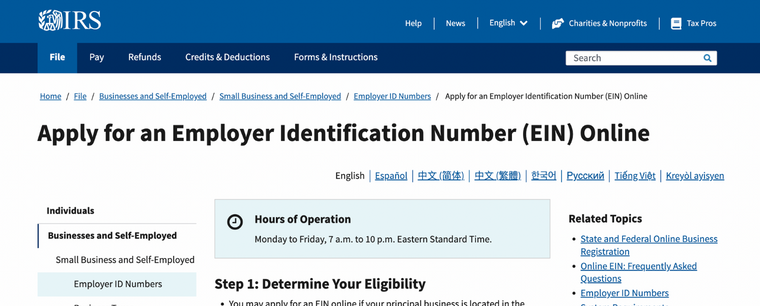
Similar to every U.S. citizen using a social security number, businesses identify themselves with a unique Employee Identification Number (EIN). EINs are free and issued by the Internal Revenue Service. Businesses need an EIN number to pay and file their annual tax return, file federal taxes online, issue payroll, and provide tax documents requested by suppliers.
Step 7. Apply for licenses and permits
Most small businesses, regardless of whether you sell online or from a brick-and-mortar storefront, need a combination of licenses and permits from both federal and state agencies. You, however, may not need to apply until you reach a specific revenue threshold.
The required licenses and permits you need will vary from state, county, and city regulations. Fees will vary based on your business activities, location, and government rules. As an entrepreneur, you should visit SBA to find out what licenses and permits you need to obtain.
Step 8. Branding strategy

Creating a brand for your online business is an important way to differentiate yourself from the competition and build customer loyalty. But with so many businesses vying for attention from online shoppers, how do you create a brand that will make your business stand out?
Your brand identity is the heart and soul of your online business. It’s the way your customer relates to you and trusts you. It’s what makes your business unique and gives you a competitive edge. Your branding not only affects your products or services, but it also affects how your customer feels about your company as a whole.
What are your core values, and what message do you want to communicate to your customers? Once you have a clear understanding of your brand identity, you can start to craft a visual identity that reflects your brand.
The tools you need to consider for your brand are color(s), name, logo, font, theme, graphics, blog, videos, emails, vision, sound, and the message you’re sending.
If you’re the creative type, you can design a logo yourself in Canva or have your logo designed for you through a professional on Fiverr.
How are you portraying your brand overall? Is it a fun, playful brand, is it organic and earthy, or is it serious and professional? How can you make sure that they remember your brand when they see it in their social media feeds?
By carefully planning your brand strategy, you can ensure that customers will recognize and engage with your brand across all platforms.
Step 9. Choose an e-commerce platform and build your website
Your website is the foundation of your e-commerce store, so it’s important to make sure it’s professional and easy to use.
When it comes to e-commerce platforms, there are a number of different options to choose from. Some of the most popular include Shopify, Wix, Squarespace, BigCommerce, Square Online, and Adobe Commerce. Each ecommerce website platform has different strengths and weaknesses, so it is important to consider what your needs are as an online seller when making your choice between many ecommerce platforms.
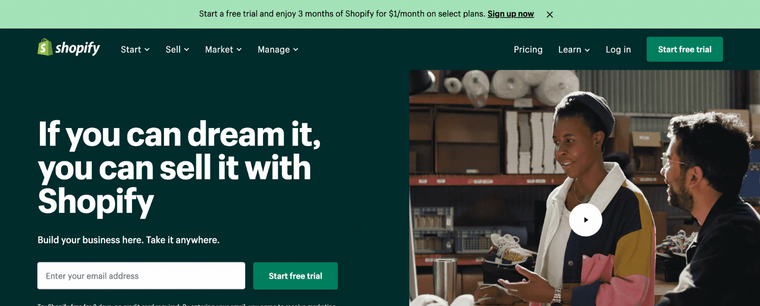
Shopify
Shopify is one of the most popular e-commerce platforms today. Launched in 2004, Shopify has quickly become a favorite among entrepreneurs looking to build their own ecommerce websites, online stores and businesses. Shopify was designed specifically to create an online store.
The platform’s intuitive interface makes it simple for anyone to get started, while its extensive suite of tools allows users to customize their web presence and drive sales. You can purchase the basic plan for as little as $29/mo and as much as $299/mo.
Wix
Wix is a popular eCommerce platform that offers businesses of all sizes an easy way to create and manage an online store. Its user-friendly interface makes it simple to add and organize products and customize the look and feel of your ecommerce store with many templates to choose from.
Wix offers an unstructured editor giving you the flexibility to move things around (drag and drop) on your page. It also uses Artificial Design Intelligence (ADI) editor giving you more design flexibility. They also give you a free custom domain. Wix does offer a free plan, and e-commerce plans will cost you $27-$59 a month.
Squarespace
Squarespace launched in a dorm room in 2003 and is a popular e-commerce platform on the market today. Known for offering impressive templates, it has a more structured editor. Meaning you can drag content blocks into rows and columns.
It was originally created with the intent of creating and maintaining content-based websites. Over time it has emerged and now offers users both options – create a content-driven site or build an e-commerce site. A basic commerce site costs $29/mo, and the advance plan is $49/mo.
BigCommerce
BigCommerce is one of the leading eCommerce software platforms on the market. Offering more built-in features, the platform was designed specifically with small businesses in mind, this powerful platform allows you to build and customize an online store quickly and easily.
You do not need design skills or to be tech-savvy, but you do have the option to edit the HTML and CSS. The standard plan is $29.95/mo and goes up to the pro plan, which is $299.95/mo.
Square
At Square, their goal is to make online e-commerce easy, accessible, and affordable for everyone. They offer a free plan, and pricing goes up to $79/mo for the premium plan.
Their proprietary platform allows businesses of all sizes to easily create and manage their own unique online store, and their simple pricing structure means that you don’t have to spend a fortune on expensive fees or services.
Adobe Commerce (formerly Magento)
Adobe Commerce, formerly known as Magneto, is a popular eCommerce platform that many e-commerce businesses use to sell their products for online shopping. It goes beyond the basics allowing users to have multi-channel experiences. You can serve both B2C and B2B in an all-in-one platform.
Users can also offer multilingual websites. While the open-source platform is free, there are fees associated with using it, which will run you $22,000/year and up.
At the end of the day, you can hire a professional on Fiverr to design your site for you. Choosing the right e-commerce platform will depend on what your needs are and what level of support you are looking for from your provider.
Whether you decide on Shopify, Wix, Squarespace, BigCommerce, Square, or Adobe Commerce (or another platform entirely), just make sure that you do your research beforehand so that you find a solution that fits well with your current and long-term business goals and objectives.
Step 10. Source products
It’s much easier in our global economy to source products. Today, we do it mostly from the comfort of our own homes. Product sourcing is the process where a business obtains inventory (products) to sell.
There are many options to source inventory for your own online store. You can choose artisan handcrafted merchandise from a manufacturer, local or global wholesalers, or through a tradeshow.
1. Artisan Handcrafted

Many online businesses handcraft their own or someone else’s handmade artisan products. Products such as jewelry, furniture, ceramics, art, clothing, and more give you more control over product quality.
The advantage of handcrafted products is it’s usually one of a kind. The downside is it can be costly and more difficult to scale. However, there is a growing market and demand for locally sourced and artisanal handcrafted items.
2. Manufacturer
Many sellers choose to source and partner with a manufacturer. You can source two types of products from a manufacturer, white label and private label. White label is a more generic product sold to a variety of retailers, while private label gives you more control over the product, packaging, and label.
3. Local or Global Wholesaler
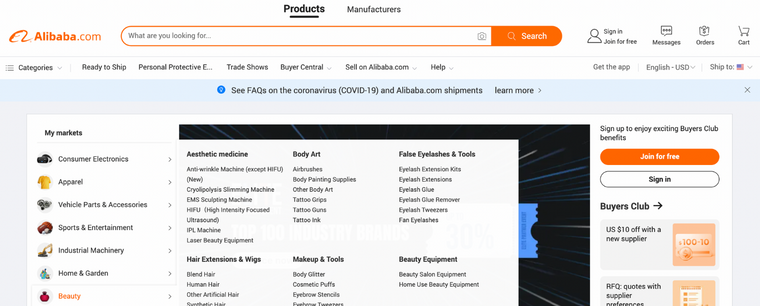
An easy and fast business strategy is to source products online from a local or global wholesaler. Wholesalers provide you with the products they themselves have sourced. They often sell products already established in the market, which makes the buying process faster. You’ll differentiate your product with branding, product descriptions, price, or bundling.
4. Attend a Trade Show
Lastly, you can attend local or large trade shows where buyers and businesses come together to discuss the latest and greatest products and trends. A trade show is designed to connect suppliers with brand owners. It gives you access to touch and feel the products of many suppliers all at once
Once you’ve sourced your products, you’ll need to take high-quality photos of your products and list them on your website. Do not try to save money on product photos and DIY your photographs unless you have the skills and abilities to create high-quality professional images for your product photos and website.
Step 11. Marketing

A marketing strategy is a formalized plan for how you plan to drive traffic to your online store. It’s how you’re going to create visibility and convert prospective users into paying customers.
Create Content
An important and often overlooked aspect of any successful online store or business is content marketing. Content marketing is the process of creating and sharing original content that promotes your business or product. This can include blog posts, articles, infographics, videos, and more. Creating high-quality content will help you attract new visitors to your website and convert them into customers or clients.
Email Marketing
One of the most important marketing strategies for your e-commerce business. Email marketing is still one of the most powerful converting marketing tools, with the highest return on investment. Email marketing gives you a chance to create a relationship with your customer through personalized content.
It allows you to give them a behind-the-scenes look into your business and a way to introduce them to your products. Use ConvertKit opt-in forms to capture and convert leads.
Google Ads

Google advertising is a way to reach new customers across the web. Creating a strategy and successful campaign will with Google ads is a way for an e-commerce business to grow its brand, increase online sales and scale its business.
Social Media
A social media marketing strategy for your online store will help communicate with your existing customers, create more brand recognition, and generate more sales. It’s a process used to increase traffic while interacting with potential customers. Social media channels could include platforms such as Facebook, Youtube, TikTok, Instagram, and Pinterest.
It’s important to remember that marketing is key to growth. Once you have your product and website up and running and your website is bringing in traffic, you’ll want to make sure you have a marketing strategy in place to keep the traffic coming.
You can market your online store through content creation, paid advertisements like Google AdWords, email marketing, organic social presence, advertising on social media, and partnering with compatible brands.
From the start, really focus on growing your email list and building relationships with your customers. You can do this by providing stellar customer service, offering lead magnets like a giveaway, freebies, and samples, running contests and giveaways, and engaging on social media.
While it can take time to launch an online store and see results, with the proper planning, product, and marketing strategy, you can have a successful online business.
Step 12. How much does it cost to start an e-commerce business?

Now that you’ve gone through all the steps it takes on how to start a online store and an online business, you may be wondering how much it’s going to cost.
While you’re saving on costs like rent, employees, inventory, furniture, and fixtures typically associated with a brick-and-mortar business, you’ll still have some costs associated with starting an online store.
Business licenses, permits, and trademarks
Depending on the type of entity you form and the costs associated with your location, it can range anywhere from $20 to several hundred dollars.
Domain name and hosting
Some e-commerce platforms will include a domain name and hosting, while others need to purchase these separately. The cost of a domain depends on its popularity and availability. You can buy a domain name on Godaddy for as little as $0.01 and up to $20. Hosting typically costs $15-$30/mo.
E-commerce platform
Most e-commerce platforms allow you a free plan, but there will be additional fees. There are e-commerce platform plans that range from $15 up to several hundred dollars, depending on your needs.
Payment processor
E-commerce payment processing happens when a merchant accepts a payment from a customer over the Internet. It’s done through a secure terminal or gateway. The payment processor keeps the customer’s personal and financial information safe. Typically fees start at 2.9% plus ($.30) per transaction.
Products and shipping
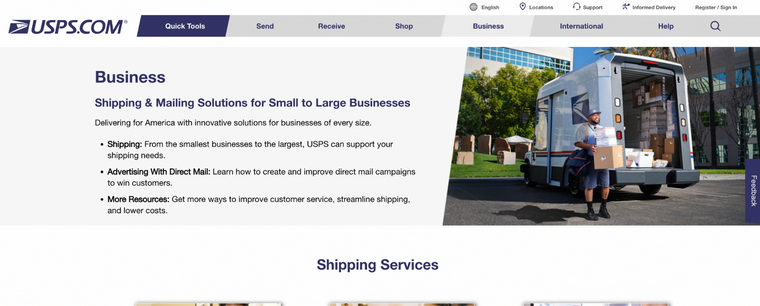
The costs associated with products and shipping will depend on the products you choose to sell, the cost of shipping, and the inventory you choose to carry. Your startup expenses will likely be the most expensive.
Inventory management is important. You’ll want to purchase enough inventory to get started and have products in stock but not too many that you’re stuck with excess inventory you can’t sell.
Shipping costs will vary depending on the size and weight of your product. Some e-commerce platforms will offer a discount on shipping, but it’s always a good idea to get a quote from major shipping carriers like USPS, UPS, and FedEx.
Marketing and advertising
Allocate 5-10% of your gross revenue to marketing and advertising. Until you know what works best for your business, it’s a good idea to explore both the free and paid marketing options available to you.
Step 13. Grow and scale
You need to make sure you have a solid plan to grow and scale your online store. By following these tips, you can create a solid plan for scaling your e-commerce business.
Understand your target market
It’s important to understand who you are trying to reach with your products or services. The more specific you can be, the better. Once you’ve identified your target market, you can create content and marketing campaigns that are tailored to their needs and interests.
Invest in SEO
Invest in search engine optimization (SEO) for your business. Search engine optimization is crucial for getting your website seen in search engine results by potential customers. Make sure your website is optimized for search engines and for the right keywords. Use interlinks and backlinks to insightful and authoritative content.
Build a strong social media presence

Social media is a powerful tool for promoting your business online. Make sure you’re active on the platforms where your target market spends the most time and that you’re regularly sharing high-quality content.
Create a sales funnel
A sales funnel is a process that helps people move from being interested in your product or service to becoming paying customers. Make sure your sales funnel is well-defined and that you’re consistently driving traffic to it.
Focus on providing value
At the end of the day, people are more likely to buy from businesses they perceive as being helpful and trustworthy. Make sure you’re focused on providing value at every stage of the customer journey.
Conclusion
There are many advantages and disadvantages to starting an e-commerce business. It can be both challenging and exciting. Through research, product selection, marketing, branding, and building your e-commerce platform, you will learn a lot.
It’s important to take the proper steps and make intelligent investments to grow your business. Just remember to focus on providing value every step of the way, and you’ll be well on your way to success. The best advice I can give you is to just get started!

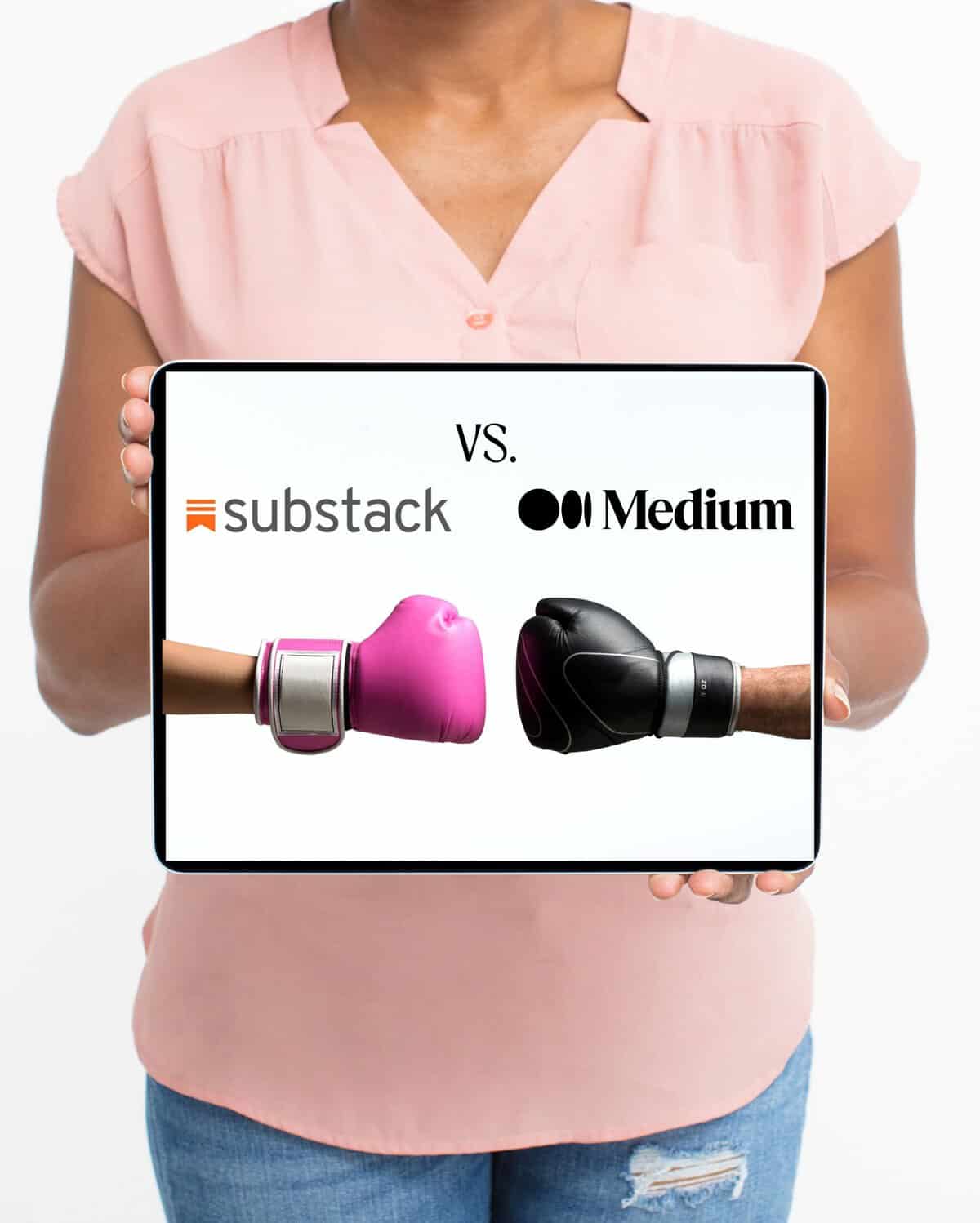
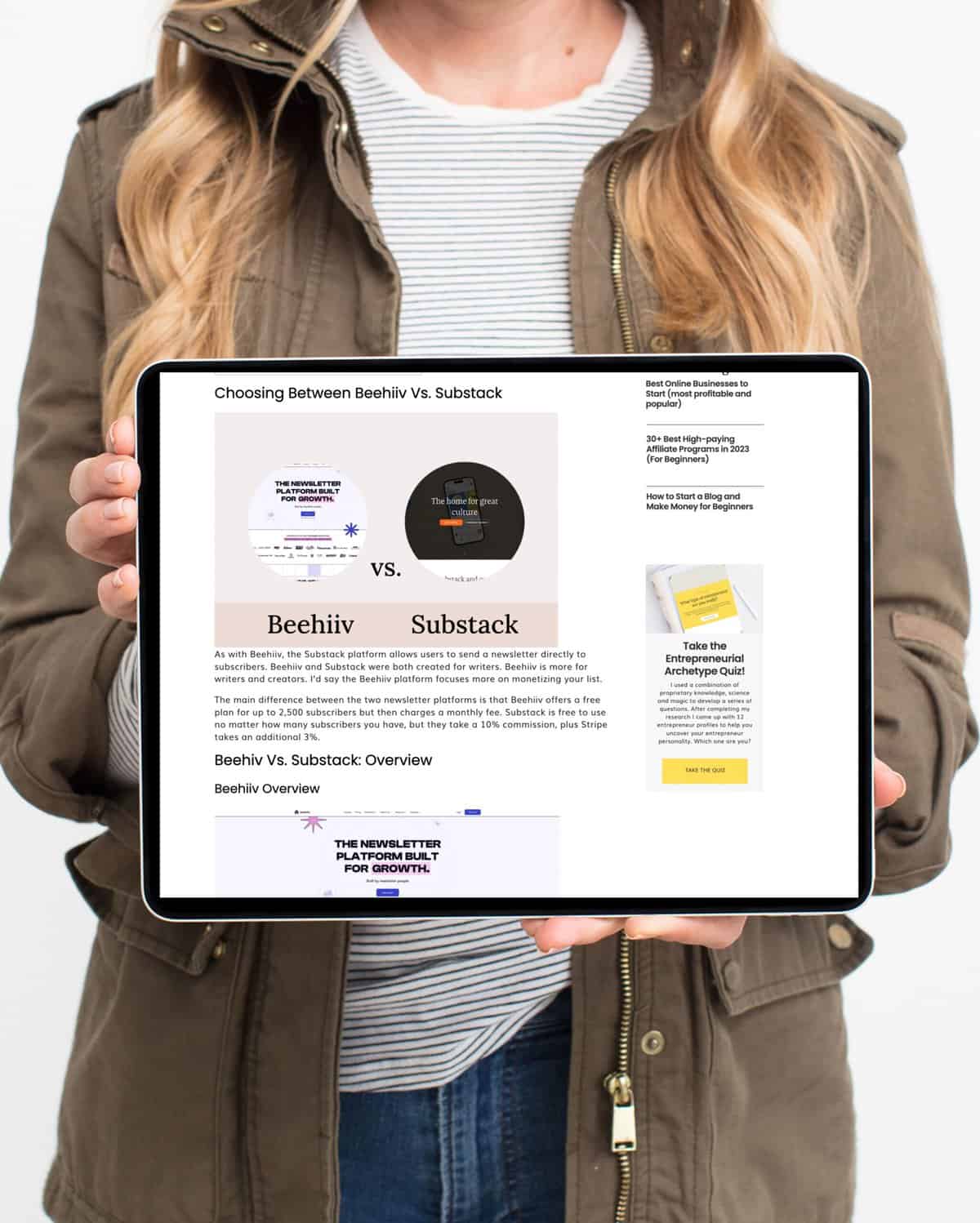




+ show Comments
- Hide Comments
add a comment